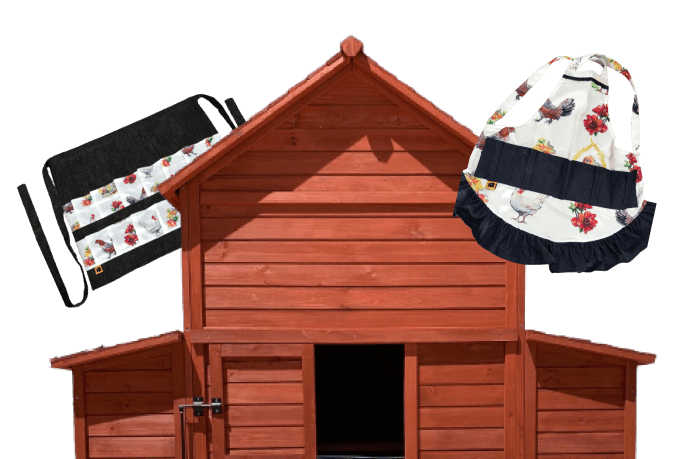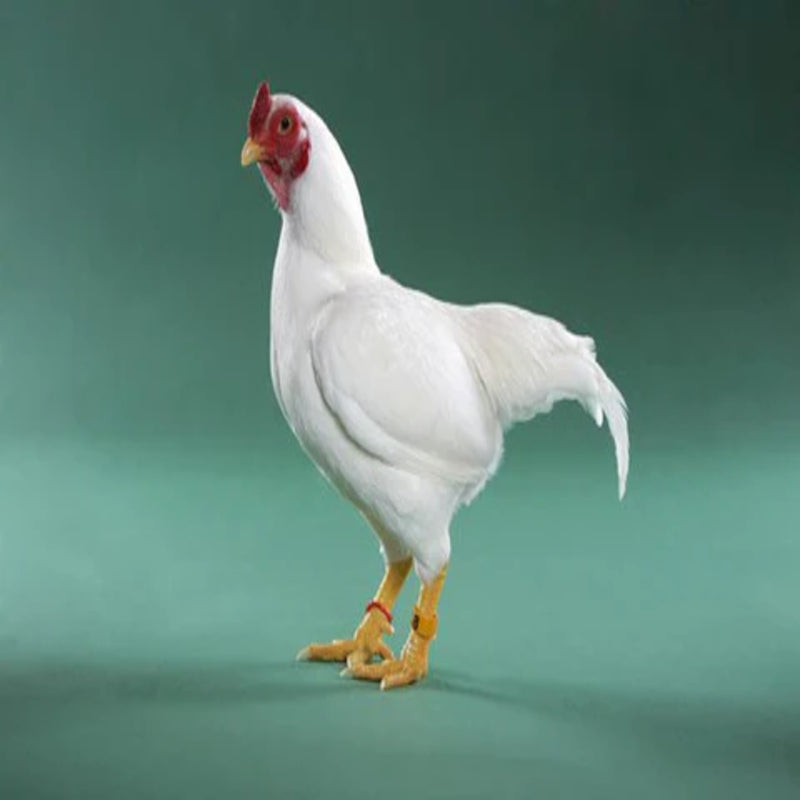-
Feathered Feet
No
-
Heat Tolerance
Not Especially Heat Tolerant
-
Egg Size
Small
-
Cold Tolerance
Hardy In Winter
-
Egg Color
Tinted
-
Egg Quantity
Poor (1/wk)
-
Personality
Friendly
-
Size
Bantam
-
Abundance
Common
Cornish Bantams
Cornish Bantams
Introduced in England in 1887 as Indian Games and later renamed Cornish by the American Poultry Association, Cornish Bantams have origins in Cornwall County, England. Despite their fierce appearance, these stout bantams are quite docile, making them friendly, talkative pets.
Known for their muscular bodies, short, wide-set legs, and large, broad breast, Cornish Bantams are popular as both meat birds and exhibition chickens. At about 2 pounds each, they make a convenient serving size for one or two people. Hens are also good broodies and excellent foragers. With a distinctive pea comb and tight feathering, Cornish Bantams are available in eight APA-recognized color varieties, with the dark Cornish being the most popular.

Appearance:
-
Feather Color: Cornish Bantams come in white, black, red and golden. The feathers are smooth and glossy. While the color can vary, they are always clean and uniform. The males are more colorful than the females.
-
Body Type: The Cornish Bantam is muscular and compact. Small but solid and well proportioned with a broad deep chest like the standard Cornish chicken but on a smaller scale. They look powerful and robust with a game bird stance.
-
Comb and Wattles: Single comb, small and upright. Red and sits on top of the head. Wattles are red and contrast with their often darker plumage.
-
Tail: Medium size and carried slightly upwards. Feathers are compact and broad and adds to the athletic look.
-
Legs and Toes: Yellow and short. Like most bantams. Strong and muscular to support their compact body. Three toes on each foot. Short and strong legs helps them balance and move around.
Temperament:
-
Energetic and Lively: Cornish Bantams are high energy and active. Always on the move, exploring and foraging. Strong and muscular body makes them quick and agile. They are curious and love to move around.
-
Confident and Bold: Like the larger Cornish, they are confident and sometimes bold. Courageous like the Cornish breed and will stand their ground when challenged by other chickens. Not aggressive but strong willed and independent.
-
Free Range: Good for free range where they can forage, explore and show off their natural behavior. Active nature makes them suitable for larger spaces. They love to roam and can be very curious and will peck at insects and small plants.
-
Not for Small Flocks: Due to their bold nature and assertive personality, Cornish Bantams may not be the best for small or docile flocks. They can show dominant behavior and may not get along with more passive breeds. Better suited for active flocks where their energy can be channeled.

Egg Laying:
-
Moderate Egg Production: Cornish Bantams are not heavy egg layers compared to other breeds. They lay small brown eggs, about 2-3 per week. While not heavy egg layers, they produce excellent quality and flavor eggs.
-
Egg Size and Quality: Small eggs as with most bantams but rich in flavor. They are more appreciated for their ornamental value, beauty and uniqueness rather than being heavy egg layers.
Health and Care:
-
Hardy: Cornish Bantams are generally hardy and can adapt to different climates. Like all chickens, they should be protected from extreme weather especially during colder months. Their small size and single comb makes them more prone to frostbite in harsh winters so shelter from extreme cold is important.
-
Low Maintenance: Cornish Bantams are low maintenance in terms of grooming. Feathers do not require frequent attention but regular checks for parasites like mites or lice are recommended. A clean and dry environment is essential for their overall health.
-
Flight Risk: Due to their small size, Cornish Bantams can fly short distances. Not as flighty as some other bantam breeds but can fly over low fences or barriers. A secure pen or high fence is necessary to keep them contained and prevent them from wandering off.
Show and Ornamental Qualities:
-
Poultry Shows: Cornish Bantams are shown in poultry shows for their distinctive looks and strong game bird heritage. Muscular build, confident stance and striking feather colors make them a popular choice in exhibitions. They are highly valued in bantam classes for their physique and active nature.
- Ornamental Value: Cornish Bantams are highly ornamental due to their unique looks, compact body and energetic personality. They are captivating to look at and their energetic nature makes them a lively addition to any backyard or flock. They are sought after by those who want a pretty bird with a bold character.
Cornish Bantams Facts
- Poultry Show Class: All Other Combs Clean Legged Bantams
-
Weights – Hen ——- 36 oz
Rooster—- 44 oz
Pullet—— 32 oz
Cockerel— 40 oz
- Purpose and Type: Exhibition, Pet, Meat
- Egg Shell Color: Tinted
- Egg Production: 60-90 Eggs per year (Estimate only, see FAQ)
- Egg Size: Small
- Temperament: Docile and Friendly
- Gender Accuracy: Not Sexed
- Fertility Percentage: 40%
- Broody: Setter
- Mating Ratio: 4 Females to 1 Male
- Roost Height: 1 to 3 feet
- Country of Origin: England
- APA: Yes, First Variety Recognized by the American Standard of Perfection in 1933
- TLC: Not Listed
-
Breeder Farm Source: Poultry Breeding Farm has discontinued offering Cornish Bantams
Frequently Asked Questions:
What is a Cornish Bantam?
A stout, docile bantam chicken with origins in England, popular for both meat and exhibition.
Are Cornish Bantams good for brooding?
Yes, Cornish Bantam hens are known to be good broodies.
What is the typical size of a Cornish Bantam?
They weigh about 2 pounds, making them a convenient size for small meals.
What makes Cornish Bantams unique for shows?
Their muscular build, wide-set legs, pea comb, and tight feathering make them standout exhibition birds.
How many color varieties of Cornish Bantams are recognized by the APA?
The APA recognizes 8 color varieties, with dark Cornish being the most popular.
Notice: We do not sell items on Amazon or other websites.




